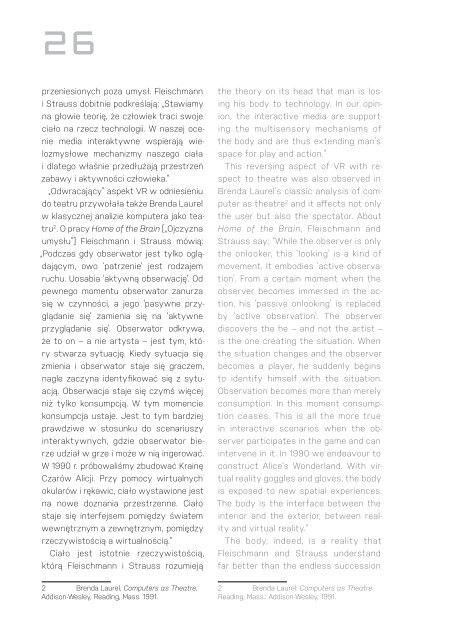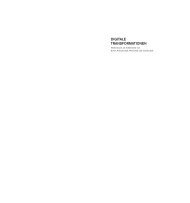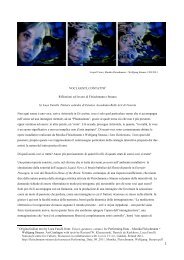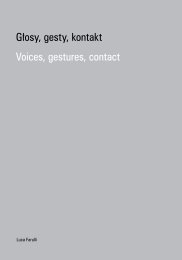Performing Data | Monika Fleischmann + Wolfgang Strauss
Performing Data is a review of Monika Fleischmann´s and Wolfgang Strauss´artistic body of work and a catalogue of their exhibition in Poland 2011. It presents works from Virtual Reality (Home of the Brain) up to Mixed Reality (Murmuring Fields) from Fluid Interface (Liquid Views) up to Floating Interface (Medienfluss) and texts by Ryszard W. Kluszczynski, Derrick de Kerkhove, Luca Farulli. Monika Fleischmann and Wolfgang Strauss from the German Fraunhofer research institute show us an intersection of the body and immaterial digital data. Immersion in data flow causes productive moments of disturbance and suspension, and consequently – a feeling of real physical presence. Fleischmann, Monika; Strauss, Wolfgang: Performing Data | Performowanie danych. National Centre for Culture, Warszawa 2011 in collaboration with Laznia CCArt, Gdańsk, Poland 2011 ISBN 978-83-61587-55-2 (en/pl) http://artline-southbaltic.eu/de/event/performing-data/
Performing Data is a review of Monika Fleischmann´s and Wolfgang Strauss´artistic body of work and a catalogue of their exhibition in Poland 2011. It presents works from Virtual Reality (Home of the Brain) up to Mixed Reality (Murmuring Fields) from Fluid Interface (Liquid Views) up to Floating Interface (Medienfluss) and texts by Ryszard W. Kluszczynski, Derrick de Kerkhove, Luca Farulli.
Monika Fleischmann and Wolfgang Strauss from the German Fraunhofer research institute show us an intersection of the body and immaterial digital data. Immersion in data flow causes productive moments of disturbance and suspension, and consequently – a feeling of real physical presence.
Fleischmann, Monika; Strauss, Wolfgang: Performing Data | Performowanie danych. National Centre for Culture, Warszawa 2011 in collaboration with Laznia CCArt, Gdańsk, Poland 2011 ISBN 978-83-61587-55-2 (en/pl) http://artline-southbaltic.eu/de/event/performing-data/
Create successful ePaper yourself
Turn your PDF publications into a flip-book with our unique Google optimized e-Paper software.
przeniesionych poza umysł. <strong>Fleischmann</strong><br />
i <strong>Strauss</strong> dobitnie podkreślają: „Stawiamy<br />
na głowie teorię, że człowiek traci swoje<br />
ciało na rzecz technologii. W naszej ocenie<br />
media interaktywne wspierają wielozmysłowe<br />
mechanizmy naszego ciała<br />
i dlatego właśnie przedłużają przestrzeń<br />
zabawy i aktywności człowieka.”<br />
„Odwracający” aspekt VR w odniesieniu<br />
do teatru przywołała także Brenda Laurel<br />
w klasycznej analizie komputera jako teatru<br />
2 . O pracy Home of the Brain [„Ojczyzna<br />
umysłu”] <strong>Fleischmann</strong> i <strong>Strauss</strong> mówią:<br />
„Podczas gdy obserwator jest tylko oglądającym,<br />
owo ‘patrzenie’ jest rodzajem<br />
ruchu. Uosabia ‘aktywną obserwację’. Od<br />
pewnego momentu obserwator zanurza<br />
się w czynności, a jego ‘pasywne przyglądanie<br />
się’ zamienia się na ‘aktywne<br />
przyglądanie się’. Obserwator odkrywa,<br />
że to on – a nie artysta – jest tym, który<br />
stwarza sytuację. Kiedy sytuacja się<br />
zmienia i obserwator staje się graczem,<br />
nagle zaczyna identyfikować się z sytuacją.<br />
Obserwacja staje się czymś więcej<br />
niż tylko konsumpcją. W tym momencie<br />
konsumpcja ustaje. Jest to tym bardziej<br />
prawdziwe w stosunku do scenariuszy<br />
interaktywnych, gdzie obserwator bierze<br />
udział w grze i może w nią ingerować.<br />
W 1990 r. próbowaliśmy zbudować Krainę<br />
Czarów Alicji. Przy pomocy wirtualnych<br />
okularów i rękawic, ciało wystawione jest<br />
na nowe doznania przestrzenne. Ciało<br />
staje się interfejsem pomiędzy światem<br />
wewnętrznym a zewnętrznym, pomiędzy<br />
rzeczywistością a wirtualnością.”<br />
Ciało jest istotnie rzeczywistością,<br />
którą <strong>Fleischmann</strong> i <strong>Strauss</strong> rozumieją<br />
2 Brenda Laurel, Computers as Theatre,<br />
Addison-Wesley, Reading, Mass. 1991.<br />
the theory on its head that man is losing<br />
his body to technology. In our opinion,<br />
the interactive media are supporting<br />
the multisensory mechanisms of<br />
the body and are thus extending man’s<br />
space for play and action.”<br />
This reversing aspect of VR with respect<br />
to theatre was also observed in<br />
Brenda Laurel’s classic analysis of computer<br />
as theatre 2 and it affects not only<br />
the user but also the spectator. About<br />
Home of the Brain, <strong>Fleischmann</strong> and<br />
<strong>Strauss</strong> say: “While the observer is only<br />
the onlooker, this ‘looking’ is a kind of<br />
movement. It embodies ‘active observation’.<br />
From a certain moment when the<br />
observer becomes immersed in the action,<br />
his ‘passive onlooking’ is replaced<br />
by ‘active observation’. The observer<br />
discovers the he – and not the artist –<br />
is the one creating the situation. When<br />
the situation changes and the observer<br />
becomes a player, he suddenly begins<br />
to identify himself with the situation.<br />
Observation becomes more than merely<br />
consumption. In this moment consumption<br />
ceases. This is all the more true<br />
in interactive scenarios when the observer<br />
participates in the game and can<br />
intervene in it. In 1990 we endeavour to<br />
construct Alice’s Wonderland. With virtual<br />
reality goggles and gloves, the body<br />
is exposed to new spatial experiences.<br />
The body is the interface between the<br />
interior and the exterior, between reality<br />
and virtual reality.”<br />
The body, indeed, is a reality that<br />
<strong>Fleischmann</strong> and <strong>Strauss</strong> understand<br />
far better than the endless succession<br />
2 Brenda Laurel: Computers as Theatre.<br />
Reading, Mass.: Addison-Wesley, 1991.







